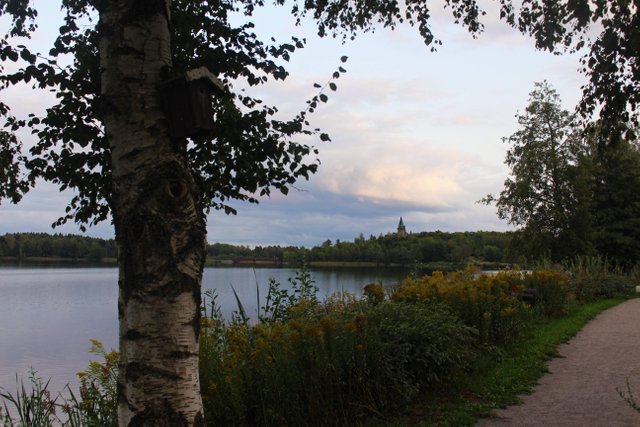
It is wildly overwhelming to stand before the doom and gloom of climate change and then feel good about riding your bike, or recycling.
So, do we just say fuck it?
Or do we start somewhere? Where we can?
It’s not perfect. It’s not what I recall seeing in the Utopian slideshows at sustainability workshops and green living festivals: where impossibly white towers laced with ivy and peppered with balcony trees rise high above a shimmering green pedestrian footpath, where watercolor people wave to passersby on the bicycle highway next to them. And you just know that somewhere in that picture there’s a cafe serving delicious meat made in a sparkling laboratory powered by solar energy, garnished with freshly picked local sprouts, served by robots because humans don’t work in the service industry anymore. They spend their days playing music, having sex and frolicking. No, it wasn’t like that at all.
And don’t get me wrong. That picture of what could be could actually be. But it lies not only on the other side of capitalism. It lies on the other side of decades of work reshaping everything from global politics to socially accepted systems of hierarchy. And perhaps most importantly and pressing, it lies on the other side of mitigating climate change immediately and globally. These massive shifts are possible but not probable. So, should we just throw up our hands and say fuck it? Do we simply put out the picnic blanket and watch our slow suicide unfold day by day – like some twisted Truman Show? Or do we try in our imperfect ways to change things – understanding that the toxic horseman of the apocalypse is still galloping on unfettered capitalism towards our doom?
It’s an overcast day in Växjö. The train pulls into the station and only a few people get off. It’s clear that I’m the only tourist as others walk briskly left and right while I fumble with my hand-written directions to an air bnb. In place of the station there’s a giant construction site. Bold and bright lettering announces the 2020 arrival of a new Central Station and City Hall, built of course to the newest and greenest of eco-standards. At first blush, this small city of roughly 91,000 people doesn’t look too different than your average Swedish town. There’s the mild hustle and bustle of a weekday afternoon: pedestrians, bikes, some cars and buses. The various political parties have set up their information tents, hoping to sway some passing voters to their side before the September 9th election.
So at first, I was disappointed. Having decided to trek the 4 hours to the self-proclaimed “Greenest City in Europe,” I had kind of expected glimpses of that green Utopia, not a slightly more under- construction version of the city I just came from. To be fair, there is a Harry Potter castle. But nary an ivy wrapped white tower.
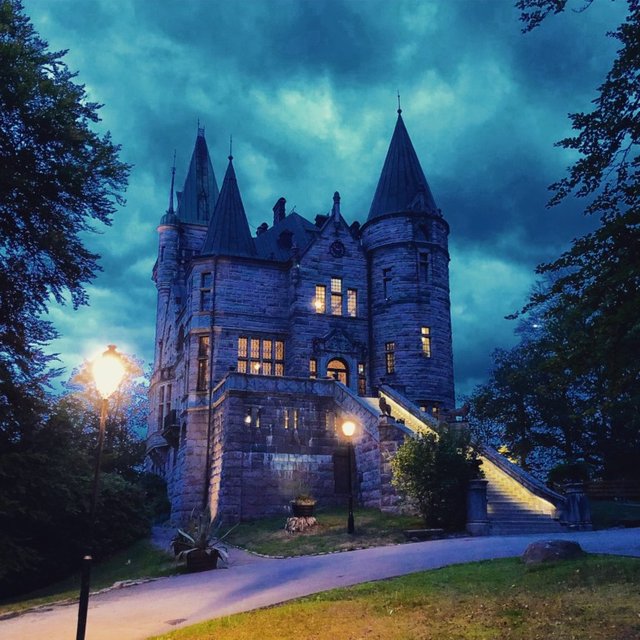
As my stay wore on, it became clear that what makes Växjö rather extraordinary lies mostly in the unseen details. The proliferation of pedestrian streets and bike paths would probably make most Americans gasp. But for Swedes, these anti-car planning decisions are nothing new. Yes, Växjö is working to expand their bike paths – creating bike highways where bicyclists won’t have to cross car traffic or swerve around little old ladies walking to the store. But, in many ways, Växjö looks just like an ordinary Swedish city. What makes Växjö extraordinary is the progress not immediately visible to impatient Utopians. It’s in the air, the water, underground, and in people’s homes.
It’s incentives you wouldn’t know about unless you live there, like clearing bike paths of snow before clearing the roads. It’s adding more buses to the fleet, all of which run on biogas made from people’s food waste. Some of that biogas is then also available for citizens at the local biogas station. Cheryl Jones Fur, the Green Party Group Leader in Växjö laughed as she told me, “It’s nice to know that when I throw out my banana peel, it’ll end up in my car.” It’s charging a tax for those who choose not to recycle while also making it easier to recycle. It’s building new homes with energy meters so that people can monitor their energy consumption and make changes based on continuous education and engagement. It’s using biomass to heat those homes.
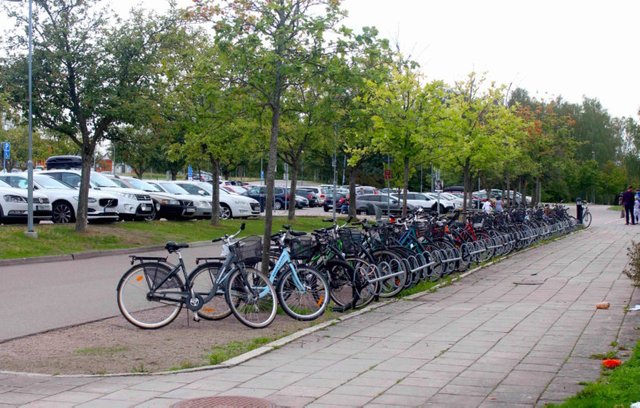
Back in the 70s, Växjö switched over to biomass after the oil crisis left energy companies in the uncomfortable position of having very little fuel at very high prices. Surrounded by forests in the south of Sweden, Växjö decided to use what they had: a lot of forestry waste. Biomass is essentially all the bits that can’t be used for construction or consumer materials. By incinerating these and utilizing them for heat and electricity, Växjö energy avoids the methane release associated with letting these unused bits rot. Although far less destructive than burning fossil fuels, biomass incineration is not carbon neutral. However, much of that can be addressed via technological advances in boilers. Växjö Environmental Coordinator Henrik Johansson explains that part of his job is to find ways to be better, to do better. Part of this is necessarily knowing that perfection isn’t possible.
Indeed, Johansson admitted to me that Växjö’s goal of being fossil-free by 2030 is probably unlikely. “We have an airport. There will still be someone with a diesel car.” But the push to make Växjö and the entire surrounding areas fossil-free is still very much on track. Perfection be damned. On top of Sweden’s financial incentives to buy electric cars, Växjö is expanding their bike paths, offering free trials of electric bikes and looking to expand the availability of biogas and charging stations. Outside of biomass, Växjö has also dipped into solar, wind, geothermal and hydropower. In short, they’re trying a bit of everything. And it’s working. This year, Växjö was awarded the European Green Leaf Award for their environmental efforts. CO2 emissions are down 58% from 1993, roughly half of all food served by the municipality is either organic or locally produced. 50% of all waste is recycled, digested or composted. 95% of citizens live less than 300 meters from a bus stop and 90% live less than 300 meters from a park or green area. Still, far from resting on laurels, Växjö isn’t slowing down. They aim to have 80% of all municipal food served be organic or local by 2020. Solar, wind and hydro power production will increase as well. Other goals include minimizing car traffic even more, addressing noise pollution, creating more green spaces, linking walking trails and making new ones. Växjö is also working on the issue of mitigating climate change – finding sustainable and creative ways to address extreme heat (as we saw this summer in Sweden) and extreme flooding. At the core of this progressive work is collaboration, education and engagement.
Outside of the oil crisis, in the 70s, Växjö also had a problem with pollution. “When I was a child, I would never even consider swimming in those lakes,” Johansson said to me during our interview. He went on to recount how the lakes had become green sludge thanks to decades of waste dumping without filtration or cleanup. Standing by the shimmering lakes with only a smell of autumn in the air, it’s hard to imagine both how it was and how they got it to look like this. “The municipality removed sediments from the bottoms of the lakes. We added fresh water from other lakes through pipelines beneath the city. We improved the ecological balance between different species of fish, and also made sure that storm water from the city didn’t enter the lakes without purification.” This then kickstarted the ongoing work to make Växjö the greenest city in Europe.
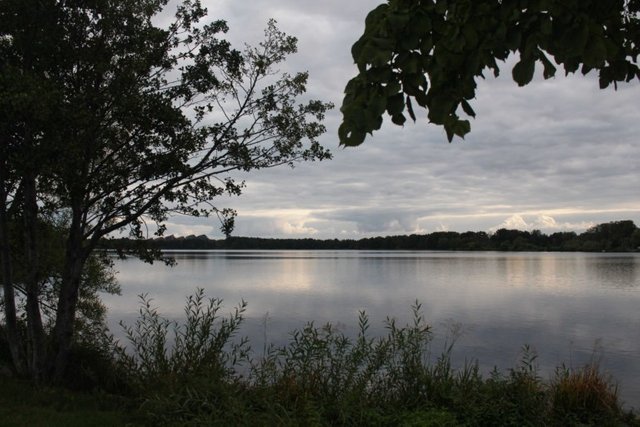
In the mid 90s, even before the Kyoto Conference, Växjö enlisted the help of the Swedish Conservation Society – Naturskyddsföreningen. Together with municipal officials, they addressed climate concerns while working with the public to address their concerns and desires. From this, the 2030 fossil-free goal was born. Johansson explains that the cleanup of the lakes was a turning point in how the municipality thought about and dealt with environmental issues. “From that we could see that if we really want to do something, we can get results. That has been in the mind of the politicians and the people since then.” Johansson says that companies have also been on board with this shift, accepting stricter environmental regulations and taking pride in the greening process. And those who haven’t been on board, aren’t working with the municipality anymore.
As an American, this probably sounds about as far-fetched as Mike Pence admitting he’s gay. And sure, the fact that Växjö is in one of the most environmentally progressive countries in the world has certainly helped their own local progress. For instance, Sweden doesn’t have any oil production at all, and very little gas. There’s also no faction of any Swedish party that denies climate change exists. Indeed, Jones Fur told me that across the board, the parties she works with agree: we need to work together on climate change. Johansson told me that it would be “political suicide” if anyone tried to end or cut the environmental projects in Växjö. He explains that it’s something everyone wants to be a part of, that engagement and education around environmental issues is key from kindergarten to the office. Jones Fur pointed out that when Växjö wanted to start its recycling program, they didn’t start by telling the adults, they started by telling the kids. “They’d be the ones who would go home and say ‘no, no, you can’t put that glass bottle there, you have to recycle it.’” Outside of school, there’s no shortage of subliminal messaging either. Posters at bus stops show off the newly received Green Leaf Award and remind folks of the fossil-free goal. Green areas, gardens, playgrounds and trails remind kids and adults of how damn nice it is to be close to nature. Installations and information plaques remind people of our role in protecting and sustaining that nature. In short, this ongoing local work that amplifies engagement, education and collaboration is why Växjö is progressing. And despite their lottery luck of being in environmentally friendly Sweden, we can still learn from both their successes and their failures. We can apply the same paradigm of localized, collaborative effort to any city or town in the U.S.
We can even use the economic argument to pressure and convince our neighbors and local officials. Contrary to bogeyman prophecies you hear in the U.S. a lot, a recent study by the Global Commission on the Economy and Climate stated that “bold climate action could deliver at least $26 trillion in net cumulative benefits from now until 2030 compared with business as usual.” Take that down to the local level and the song remains the same. Already in 2008, emissions in Växjö had been reduced by 35% per inhabitant while economic growth had increased by 69%. The municipality has added local jobs as well as upped their export capabilities thanks to the interest in Sweden and in much of Europe in going green. Johansson told me that the population is growing at a rate of roughly 1,000 inhabitants per year. When I asked him whether he felt that this growth would have a negative impact on their environmental work, he shook his head. This growth is thanks to their dedication to the environment. For economic, social and moral reasons, Johansson doesn’t think that dedication will wane anytime soon.
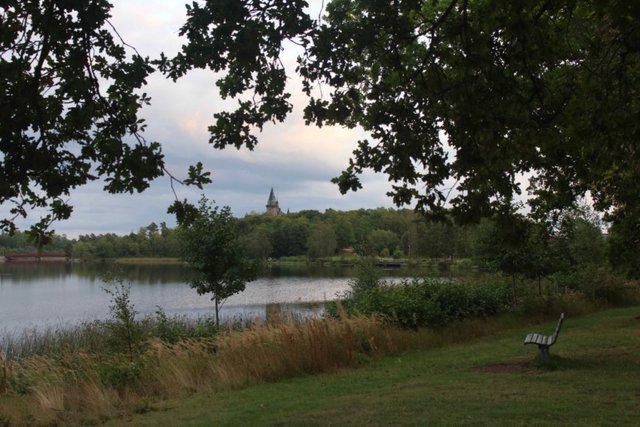
Of course, the original question still remains: can you ever be truly green in a capitalist economy? Can we hope to attain that Utopia where chic robots deliver sprout and fake-but-also-kind-of-real meat sandwiches while still being stuck in a system built on the tenets of extraction, oppression and profit? Ultimately, No. And yet, does that mean that we should discount efforts such as those happening in Växjö or indeed, around the world? Does it mean that our resolute understanding of capitalism and our unwavering fight for its abolition must give way to an absolutist paradigm critical of any progress under a capitalist system? I hope not. We need to be able to recognize and support, and indeed emulate progress that undercuts the destruction of our environment.
I want to visit that Utopia someday. But I also want to visit more cities like Växjö, that exist in this time, in their place; that are doing phenomenal work with what they have. It is only from this local, engaged level that we can ever hope to progress towards that resolute goal of a world where people and planet really are worth more than profit.
For more on Växjö and their environmental work, check out Eleanor’s reporting on Act Out!
That sounds pretty utopian to me, coming from Colorado, where our gov is in the pocket of fracking, and even our modest "setback" initiative, trying to get fracking wells to be required to be a certain distance from homes, schools, and hospitals for health reasons - gets major blowback (and was completely thrown out and didn't even make it to ballot a couple years back). Where we passed a green roof initiative last election but the city immediately went into killing it by a thousand cuts after because they said it was "too much of a burden." Etc. Ugh.
Downvoting a post can decrease pending rewards and make it less visible. Common reasons:
Submit
Is that setback initiative back on the ballot? Or maybe that was another state I'm thinking of.
In my show on this same topic (http://bit.ly/ActOut174), I talk about how a lot of what Växjö is capable of doing is based on the fact that they are in Sweden, one of the most environmentally progressive countries in the world. So, they have a hell of a head start when it comes to tackling these issues.
That being said, of course we can do it too - like Richmond, CA bucked Chevron for instance.
We just have a lot more oil and gas lobbying and political corruption to surmount.
Downvoting a post can decrease pending rewards and make it less visible. Common reasons:
Submit
Yep, it actually made it this year, it will be on the ballot! Even though the oil companies literally hired people to harass and intimidate the signature collectors, and even bought the collected signatures from one paid worker so he wouldn't turn them in.
Downvoting a post can decrease pending rewards and make it less visible. Common reasons:
Submit